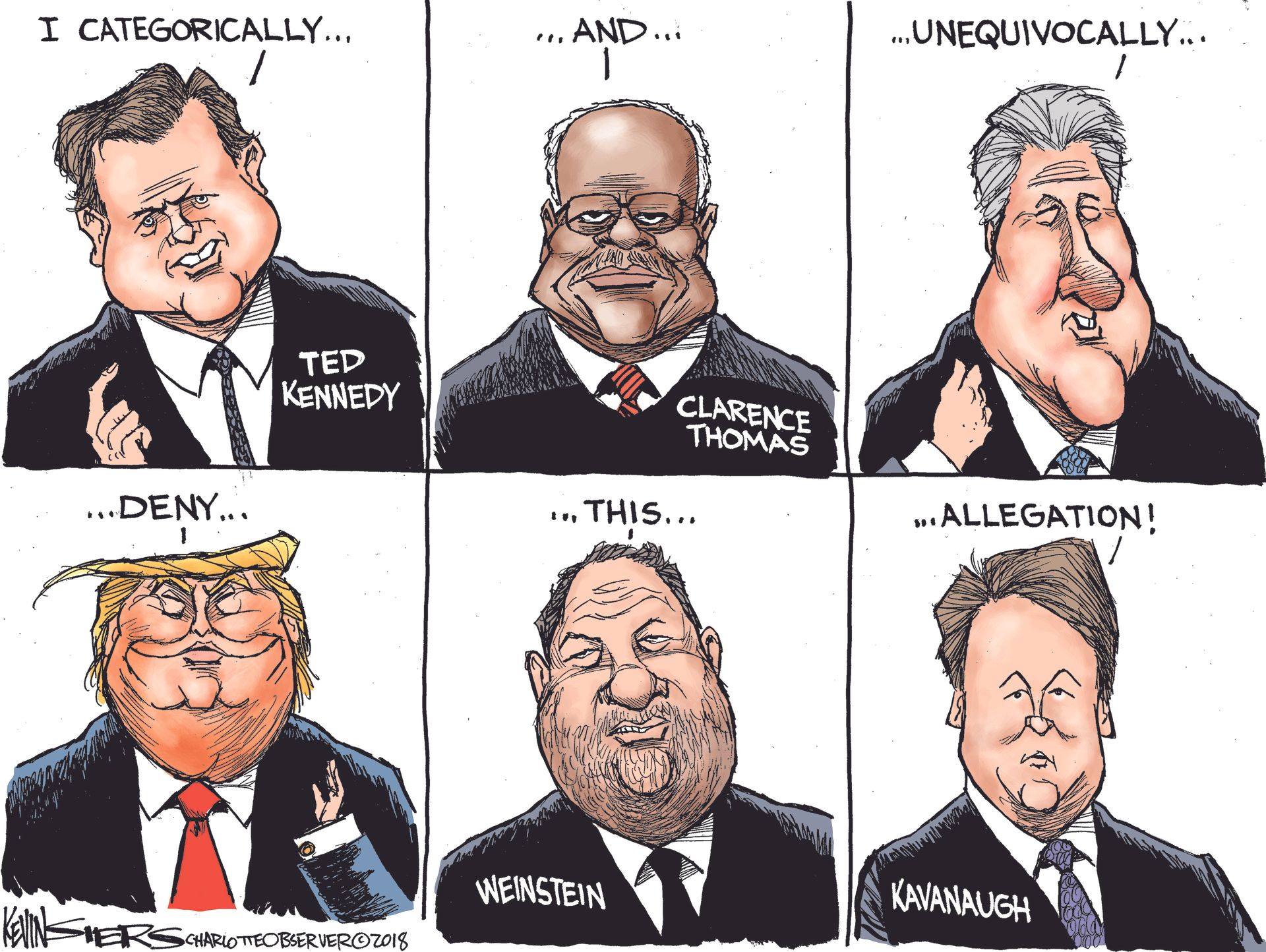Addressing Stereotypes: The Pursuit Of Authentic Asian And Asian American Representation

Table of Contents
The Perpetuation of Harmful Stereotypes
The media's portrayal of Asians and Asian Americans is often riddled with harmful stereotypes, hindering genuine understanding and fostering prejudice. These stereotypes are not harmless; they have real-world consequences for individuals and communities.
The Model Minority Myth
The "model minority" myth paints Asians and Asian Americans as inherently intelligent, hardworking, and successful, conveniently overlooking the struggles and hardships faced by many within these communities. This myth is incredibly damaging:
- In Media: It often leads to the portrayal of Asian characters as uniformly academic and lacking in emotional depth or personal struggles.
- Real-life Consequences: It creates unrealistic expectations, fostering intense pressure to conform and leading to mental health challenges among young people who feel they must constantly live up to this impossible standard. It also masks the struggles of underprivileged Asian communities and ignores systemic inequalities.
- Counter-Narratives: It's crucial to actively promote narratives that showcase the full spectrum of Asian and Asian American experiences, including failures, setbacks, and emotional complexities.
The Foreigner/Outsider Stereotype
Even for those born and raised in Western countries, Asian and Asian American characters are frequently depicted as perpetual foreigners or "others." This othering perpetuates feelings of exclusion and hinders genuine social integration.
- Examples in Media: Characters are often portrayed with thick accents, limited English proficiency, or an inability to fully assimilate, even if their background suggests otherwise.
- Impact on Social Integration: This constant portrayal of difference can lead to feelings of alienation and marginalization, hindering social acceptance and belonging. It reinforces the "us vs. them" mentality.
Hypersexualization and Fetishization
The hypersexualization and fetishization of Asian women is a particularly insidious form of stereotyping, rooted in historical power dynamics and colonialism. This objectification strips individuals of their agency and perpetuates harmful tropes.
- Examples in Media: The "dragon lady" archetype, the submissive geisha, and the exoticized "other" are all examples of this damaging representation.
- Normalization of Harmful Tropes: The constant repetition of these tropes normalizes this objectification and contributes to a culture where Asian women are viewed as sexual objects rather than complex individuals.
- Impact on Self-Perception: This representation profoundly impacts the self-perception and agency of Asian women, leading to feelings of shame and a diminished sense of self-worth.
The Importance of Diverse and Authentic Representation
Achieving authentic Asian and Asian American representation is not merely about "political correctness"; it's crucial for fostering positive social change and individual well-being.
Promoting Positive Self-Image and Mental Well-being
Seeing oneself accurately reflected in media is fundamental to developing a positive self-image and strong self-esteem.
- Positive Role Models: Seeing complex, nuanced Asian and Asian American characters in positions of power, showcasing diverse interests and experiences, provides positive role models for young people.
- Impact on Self-Acceptance: This representation fosters a sense of belonging and promotes self-acceptance, which is vital for mental health and wellbeing.
Challenging Societal Biases and Promoting Understanding
Accurate and diverse storytelling can significantly challenge existing societal biases and promote empathy among broader audiences.
- Media Challenging Stereotypes: Films, television shows, and books that actively subvert stereotypes and showcase the full range of Asian and Asian American experiences can lead to increased understanding and a dismantling of prejudiced views.
- Impact on Public Perception: This improved representation has a profound impact on public perceptions, fostering tolerance and acceptance.
Amplifying Marginalized Voices
It’s crucial to provide a platform for a wide range of Asian and Asian American experiences, recognizing the intersectionality of identities within the community.
- Intersectionality: Authentic representation must consider the intersection of race, gender, class, sexuality, and other identities to reflect the complexity of Asian and Asian American experiences.
- Underrepresented Groups: Many groups within the Asian community, such as Southeast Asian communities, LGBTQ+ Asians, and disabled Asians, are significantly underrepresented and require specific attention.
Strategies for Achieving Authentic Asian and Asian American Representation
Moving towards authentic representation demands a multi-pronged approach involving creative professionals, industry leaders, and community members.
Increasing Asian and Asian American Representation Behind the Camera
Diverse creative teams are essential to crafting authentic narratives.
- Impact of Diverse Teams: Having Asian and Asian American writers, directors, and producers ensures that stories are told from authentic perspectives and avoids perpetuating harmful stereotypes.
- Strategies for Improvement: The media industry needs to actively work towards improving diversity at all levels, from entry-level positions to executive roles.
Developing Complex and Multi-dimensional Characters
Moving beyond one-dimensional stereotypes requires creating characters with depth, nuance, and complexity.
- Well-Developed Characters: Characters should have flaws, ambitions, and relationships that resonate with viewers, transcending simplistic tropes.
- Avoiding Tropes and Clichés: Conscious effort must be made to avoid relying on tired and damaging clichés that perpetuate harmful stereotypes.
Collaborating with Asian and Asian American Communities
Meaningful representation requires collaboration with the communities being represented.
- Community Consultation: Involving community members in the script development process, consulting with experts on cultural nuances, and seeking feedback are essential steps in ensuring authenticity.
- Representation Review: Community review boards can help identify and address potential biases or inaccuracies in representations.
Conclusion
The perpetuation of harmful stereotypes against Asians and Asian Americans in media is unacceptable and has far-reaching consequences. Achieving authentic Asian and Asian American representation is not just desirable; it is essential for fostering positive self-image, challenging societal biases, and promoting genuine understanding. This requires a concerted effort from the media industry, creative professionals, and communities to prioritize diversity, nuance, and authentic storytelling. Demand authentic Asian and Asian American representation in the media you consume. Support creators who prioritize diverse narratives, and let your voice be heard in calling for a more inclusive and equitable media landscape. Let’s work together to achieve authentic Asian and Asian American representation.

Featured Posts
-
 Sonos Interim Ceo Tom Conrad An Exclusive Interview
May 12, 2025
Sonos Interim Ceo Tom Conrad An Exclusive Interview
May 12, 2025 -
 Pga Tour Mc Ilroy And Lowry Commit To Zurich Classic Team Event
May 12, 2025
Pga Tour Mc Ilroy And Lowry Commit To Zurich Classic Team Event
May 12, 2025 -
 Netanyahus Icc Case New Developments After Prosecutors Sexual Assault Allegation
May 12, 2025
Netanyahus Icc Case New Developments After Prosecutors Sexual Assault Allegation
May 12, 2025 -
 Major Indy Car Driver To Sit Out 2025 Indy 500
May 12, 2025
Major Indy Car Driver To Sit Out 2025 Indy 500
May 12, 2025 -
 The Juan Soto Performance Boost A Deeper Look At The Alleged Cause
May 12, 2025
The Juan Soto Performance Boost A Deeper Look At The Alleged Cause
May 12, 2025
